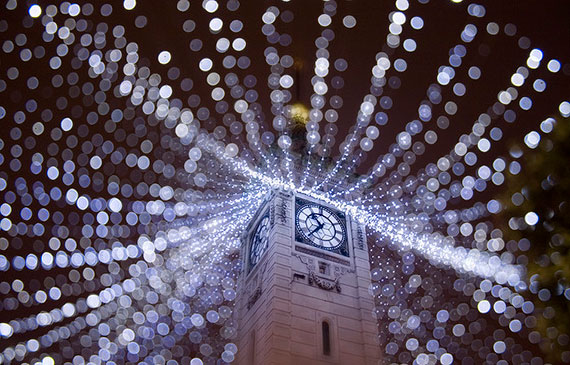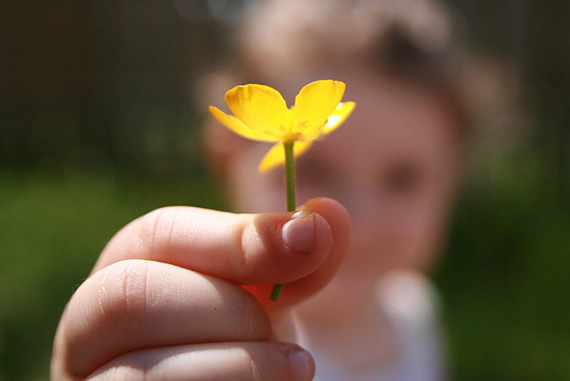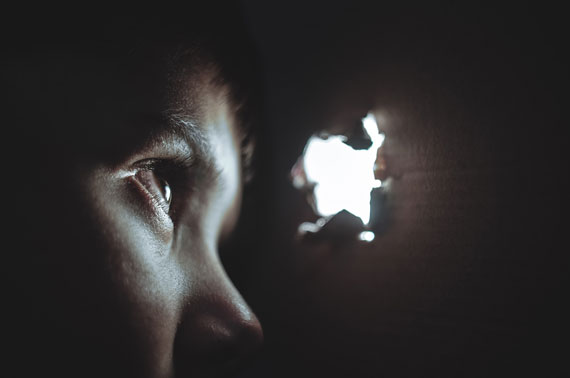A focal point is the part of an image that draws the eye of a viewer to the most important part of the image or the area that you want to highlight. How you do this will make or break the final image. If you don’t know how to create this point then you will not achieve much in your photography.

photo by Dominic Alves
The professionals have all worked this one out and if you are attempting to create similar images then learn this point well. It frustrates the eye of a viewer if there is no focal point, as the eye is not drawn to any one particular part of the photo. The focal point only occupies a small part of the scene but will make or break the whole image. The simplest form of this is an isolated object seen from a distance on a plain background.
So how is this achieved successfully? Let’s take a look at a few pointers.
1. Placing the Focal Point
Fundamental to photography this rule needs to be learnt well and executed to perfection. If you know where to place your focal point then you will shoot great images every time. A focal point needs to be off centred and never in the middle of an image. The rule of thirds places it at a point that is very pleasing to the eye as discovered by the ancient Greeks. This golden rule will bring you success every time. Imagine a noughts and crosses or tic-tac-toe grid. Two lines across the image and two lines down the image—vertically and horizontally placed. Equally spaced, they cut the image up into thirds. Where these lines intersect are your focal points. The horizontal lines are where you place your horizons. The human eye loves to view subjects placed at these intersections. Take a magazine or travel book and take a look at how many times this rule is used effectively and see how your eye is drawn to them.
2. Selective Focus
This is an incredibly effective way to focus attention on your subject of focal point. You need to know how aperture and depth of field works in order to use it properly. But, basically it’s very simple. Your settings (e.g. f/2.8, f/4, f/5.6 and so on) change the size of your aperture all the way up to f/32. You only need to be concerned with the lower apertures for this effect. If your lens goes to f/1.2, brilliant, but most lenses won’t take you below f/4 or f/2.8, as they get more expensive the wider the aperture. Depth of field is the area of focus in front of and behind your subject. With the aperture wide open at f/2.8 you will have very little in focus which makes it so effective with selective focusing. Everything not on the same focal plane as the subject will be out of focus and thereby excluded from the viewer’s attention. The longer your lens, the less depth of field you will have and the more you will be able to selectively focus.

photo by Dermot O’Halloran
It’s a great way of drawing attention when used in conjunction with the rule of thirds.
3. Exposure
By underexposing parts of the image (i.e. making them darker), the areas that are light will stand out. If you are able to able to use this effectively the light parts will stand out as focal points and whatever you place here will become the point of focus in the photo. This really works well if you have a subject that is lighter than the underexposed, darker areas. Key to the process is knowing what the final image will look like in mind’s eye.
4. Light Source
This really pushes your photographic eye to the limits and if you see the opportunity and go for it, will result in a stunning photo. How this works is that when you see a shaft of light or a ray of sunlight entering a window or coming through the clouds, use it to place your subject. A patch of late afternoon sun in dimming light will create an area that is much lighter than the surroundings.
When you shoot an image and take the metering off this area, the surrounding environment will appear darker. The image now has a focal point that draws the eye in to the image. This will also work at night where a solitary window is lit and the surrounding area is dark. Experiment with this technique and you will soon be creating dramatically lit photos.
5. Eyes
By placing a person’s eyes on a two thirds intersection a viewers eyes are immediately drawn to that area. When the subject is looking down on something else like a child or an object your eye will be naturally drawn to the point where the subjects eyes are focused. Whenever you shoot a person eyes they will automatically become the focal point so if they are the focal point then you have a problem and they will compete for attention.
6. Two Focal Points
Sometimes you will have two focal points and there will be competition, but, you can offset this by using size. One of the focal points must be considerably larger which will draw the eye but immediately your focus will move to the smaller focal point. If they are the same size the viewer’s eyes will dart between them. So be very careful when using a double focal point.
A focal point is essential to any great image and you need to be able to create this in every image. An image lacking this will appear flat and without impact. As you learn digital photography it will become easier and easier to place it in the right position. Happy shooting!
About the Author:
Wayne Turner has been teaching photography for 25 years and has written three books on photography. He has produced 21 Steps to Perfect Photos; a program of learner-based training using outcomes based education.
Like This Article?
Don't Miss The Next One!
Join over 100,000 photographers of all experience levels who receive our free photography tips and articles to stay current:








What is the difference between a focal point and a subject in a photo ?
I thought the two focal point piece was the most interesting part of this article. I would have never thought about making sure that one of the focal points is bigger than the other. It makes so much sense to me know that I read that. It makes it easier on the viewer and adds more meaning to the picture. I will definitely try this the next time I get a chance to take pictures. I am going to try this with two water bottles.
The point about the eyes are interesting. I never thought about how people automatically will look at the eyes of the person in the portrait. Now that the author says it I can definitely agree that eyes are always the focal point in a picture. Normally I try to get the eyes centered in a photo because it looks better, but I will try using rule of thirds next time and see how it turns out. Its amazing how eyes can make a picture look more dramatic.
at the top y’all put learnt not learned
Thanks for your great article. A photo of mine has received a constructive criticism on its lack of a focal point. I searched in Google images for other photos of the same place, and found none to have a more interesting perspective to learn from. Would you be so kind to give your opinion on how to have composed this photo better from a focal point point of view?
https://www.flickr.com/photos/germanicus/8664184554/
Very informative and well written guide to all you need to know for how to create a good photograph.
Thank you so much for your guidance. I knew composition was important and needed ample consideration before just snapping away, but as an amateur, I didn’t realize there was so much “meat” of thought that goes into a photo. Great information. Thanks again!
Okay, that example helps to explain your underlying question and it sounds like you’re asking about when the subject is or is not looking at the camera, yet is not specifically looking at another object in the scene (where the post implies the subject *IS* looking at a visible object). So again, positioning the subject’s eyes away from the camera can demonstrate a range of emotions – you can search for articles on NLP if you really want to get into this interesting topic. Similarly for you, having the subject look directly at the lens can also exude emotional qualities like confidence and perhaps even tension or discomfort for the viewer in some cases. That said, Joe Edelman’s video on eye orientation toward the lens may be helpful for portraiture shots for folks in your genre:
http://youtu.be/VOA49PLQFnM
For examples of portraiture with eyes looking away and the associated emotional content (Anger, Disappointment, Curiosity, Fear, Hope, Happiness, Love, Lust, Sadness, Surprise or Shame),
see:http://121clicks.com/inspirations/the-secret-of-eyes-in-portrait-photography
I understand what you’re saying but I guess my question refers to a different kind of photo. For example I do portraits so more often than not my subjects are looking right at the camera. What is the rule for that. U seemed to address only when not looking at the camera. Also for photos like a person looking up and to the left into open sky, this might work well for stock photography or a marketing purpose putting text into the sky. I guess what I’m getting at is don’t the “rules” bend a little for different context of use?
Hi Janell,
Well, in an uncluttered portrait then it’s fine to have the subject looking away from the lens – no direct competition there (although if the subject is looking up/down, etc that likely provides a cue and subtext of the subject’s attitude/feelings). Yet when the main subject’s eyes are indeed looking at something else in the picture, then the viewers eyes are also drawn away from the subject – leading us to consider WHY the subject is showing attention elsewhere. For instance if the subject is looking at their watch, we can’t help but think about why the subject is concerned over time (length, deadline, etc). Take a look at a Normal Rockwell painting, a Gary Larson “Far Side” or Scott Adams “Dilbert” cartoon strip and observe the subject’s eyes…
Regards, Michael
So I understand about the eyes, but isn’t it ok to make the eyes the focal point? In #5 it seems like you are saying the eyes should not be the focal point. This can’t be true for portraits can it? Maybe I’m not reading it right.